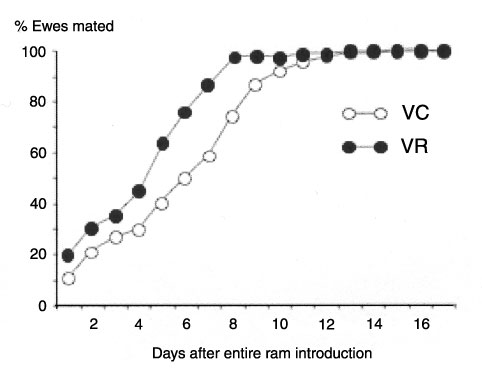278. Repeated 24-hour exposure of ewes to rams during the transition into breeding season compacts the mating of the flock
P. A. R. Hawken A B , A. C. O. Evans C and A. P. Beard BA Faculty of Agricultural and Natural Science, University of Western Australia, Crawley, WA, Australia
B School of Agriculture, Food and Rural Development, University of Newcastle, Newcastle upon Tyne, United Kingdom
C Department of Animal Science, University College Dublin, Dublin, Ireland
Reproduction, Fertility and Development 17(9) 115-115 https://doi.org/10.1071/SRB05Abs278
Submitted: 26 July 2005 Accepted: 26 July 2005 Published: 5 September 2005
Abstract
Synchronisation of oestrus during the breeding season is currently only possible with exogenous hormones, but these practices are not sustainable with growing consumer demand for ‘clean, green and ethical’ products.1 Therefore non-pharmacological methods of oestrus control need to be developed. Exposure of anoestrous ewes to rams induces a synchronous ovulation, but this ‘ram effect’ is not thought to work in the breeding season. This experiment tested whether repeated 24-h exposure of ewes to rams during the transition into the breeding season would compact the subsequent distribution of mating. This experiment used two groups of ewes: Group VR (n = 103) was exposed to 3 vasectomised rams for 24 h on Days 0 (September 10th), 17 and 34 of the study, while Group VC (n = 106) remained isolated from rams. On Day 50, raddled entire rams were introduced (ERI) and marks recorded daily. Blood was sampled from a subgroup of 35 ewes per treatment twice weekly for progesterone. At mating, synchrony scores were calculated for each group (lower score = greater synchrony). VR ewes mated 5 days (median) after ERI whereas VC ewes mated after 6 days (interquartile range: 2–6 and 3–8; P < 0.001). VR ewes had a lower synchrony score than VC ewes (2.34 v. 3.08; P < 0.01) and less variance around the median time of mating (Levene’ test; P < 0.05) indicating a more compact mating (Fig. 1). The median onset of the breeding season was earlier in VR ewes (median: October 7th; interquartile range: 3rd–7th) than VC ewes (median: October 10th; interquartile range 7th–10th; P < 0.01). The enhanced synchrony in VR ewes was not solely due to a more synchronous onset of the breeding season. In conclusion, repeated short-term ram exposure during the transition into the breeding season is a potential non-pharmacological method of oestrus synchronisation during the breeding season.

|


